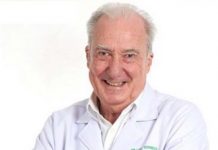Screening for breast cancer is still a subject that seems to be controversial, though honestly, I do not know why. The sensationalist press feeds on fear, and by instilling fear into women about detection of breast cancer will always sell a few more papers. Despite mammograms and suchlike, there were cases that escaped detection until it was too late and other such negative predictions. Was it all then a waste of resources and money?
No it is not, says the American Cancer Society’s director of cancer screening, Robert Smith, PhD, who says there is plenty of evidence that mammograms save lives, even for younger women.
“The American Cancer Society and other organizations have endorsed mammography screening for women in their 40s because direct and inferential evidence supports its value in reducing morbidity (injuries) and mortality (deaths) from breast cancer, the second leading cause of cancer death in women,” he says.
Other groups that recommend mammograms every one or two years for women in their 40’s include the US Preventive Services Task Force and the American College of Obstetricians and Gynecologists.
The American College of Physicians guideline says mammograms can reduce breast cancer deaths by about 15 percent among women in their 40’s, but Dr. Smith says newer studies indicate the benefit is much greater – 40 percent or more.
Unfortunately, the cancer detection story is one that suffers from a problem which can be associated with an inexact science. Since we can put men on the moon, clone sheep (and even rabbits in Chonburi, apparently) and other incredible facts, we should then be able to diagnose human conditions with pin-point accuracy. Unfortunately wrong!
Diagnosis and detection are “real time” arts, not sciences, even though we would like them to be. Sure, we use science as a tool, but that is all it is. A tool to help us see the problem. Just like we can use a telescope to see things at a distance – even if we can’t see the object, that doesn’t mean to say it wasn’t there. The telescope was facing the wrong way, the object was behind not in front.
There has been a bit of that thinking with mammograms of late. A lady has three annual clear mammograms and then finds she has breast cancer during year number four. Was the testing useless?
Again I ask you to look at the “real time” situation. So today cancer was found. When did it “start” to grow? This week, this month, this year? The answer depends upon the type of the cancer. Some fast growing cancers would be impossible to pick up, even if the person had monthly mammograms. The slow growing variety can be picked up years ahead. Unfortunately mammography cannot be a 100 percent indicator – we are not that good – yet. But it is still one of the best diagnostic procedures we have. And it is better than nothing.
Likewise, Breast Self Examination (BSE) has its detractors as well as its proponents. Sure, a lot depends upon how well the woman carries out this self testing, but again, surely it is better to look than to carry on in blissful innocence?
I do not believe the doomsayers who would tell you that the outcome is just the same. Breast cancer is like all cancers – the sooner you find it, the sooner you can deal with it and the earlier treatment is administered, the better the outcome. In fact, studies from the American National Cancer Institute show that 96 percent of women whose breast cancer is detected early live five or more years after treatment. This is called a 96 percent five year survival rate, one of the ways we measure the severity of life threatening cancers. If it were a 10 percent figure – in other words, after five years only 10 percent of the people were still alive, then I would probably also feel that predictive testing was not all that worthwhile. But it is not that bleak an outcome – 96 percent are still alive and many go on for many, many years.
Ladies, talk with your doctor regarding breast screening, and ignore sensationalism in the popular press!




